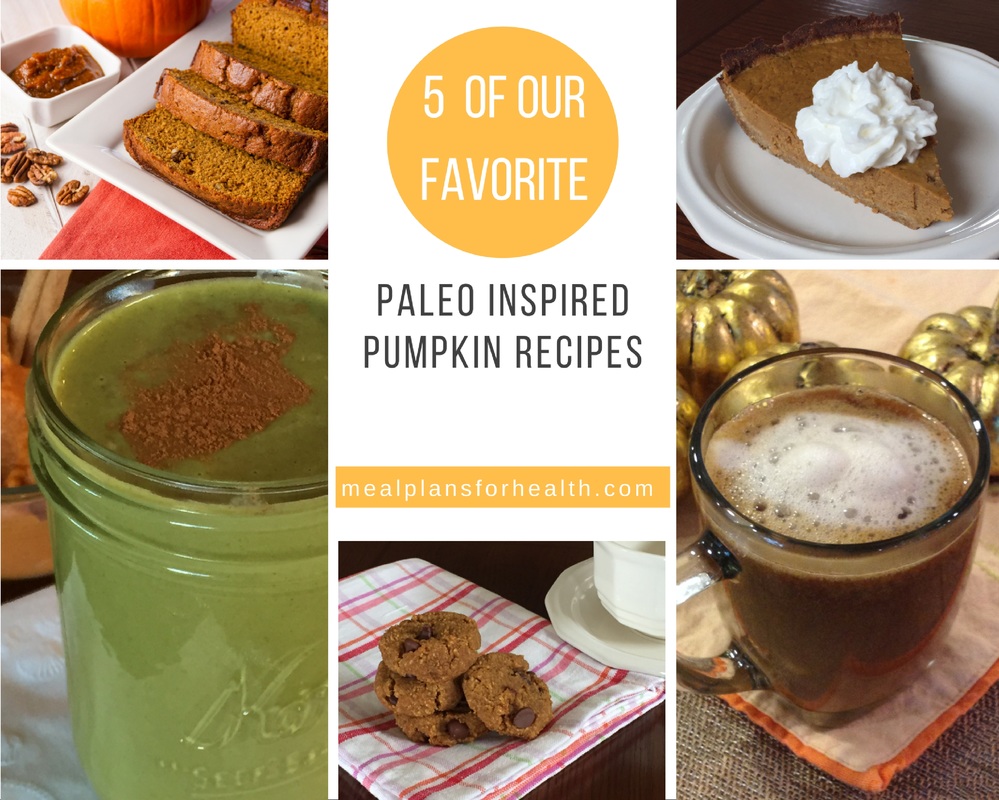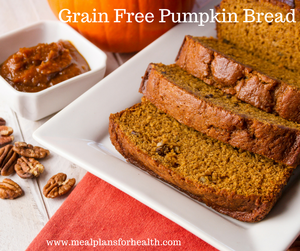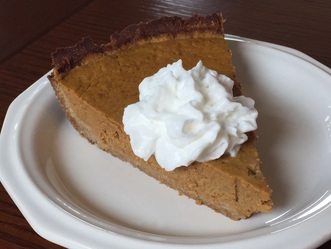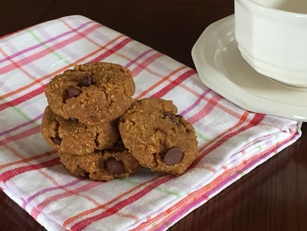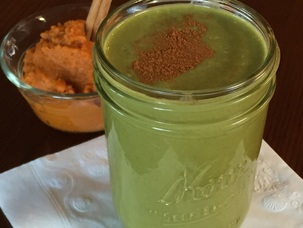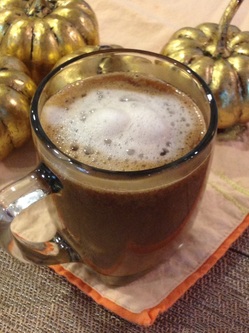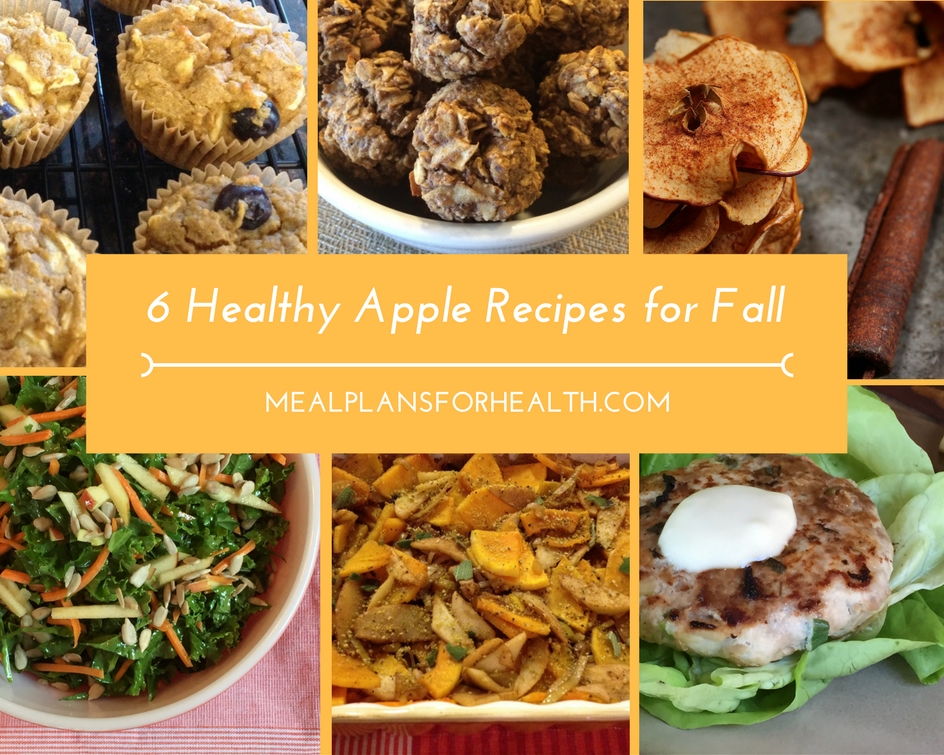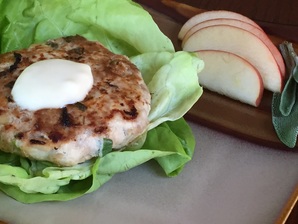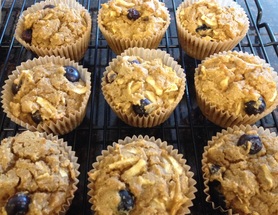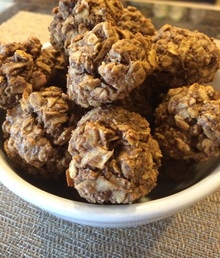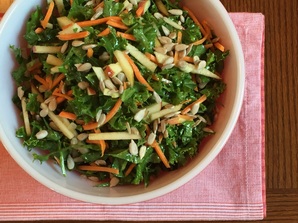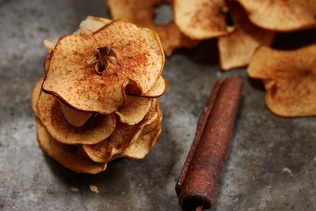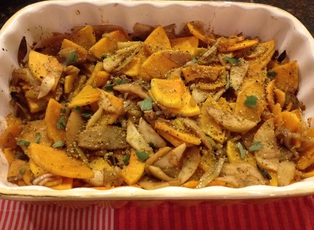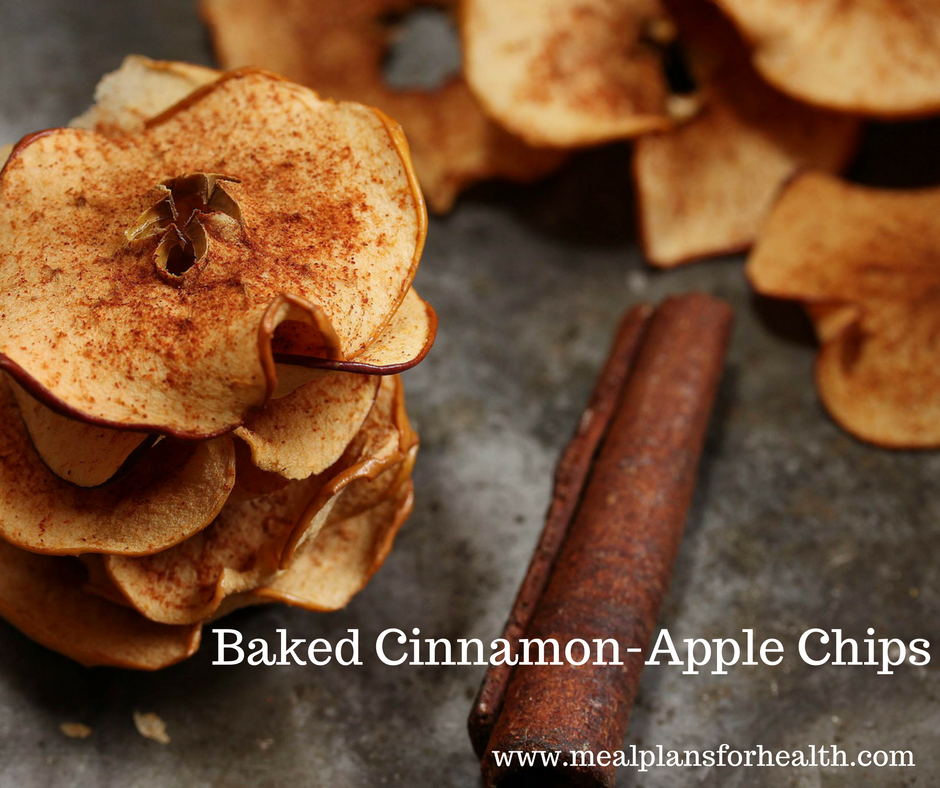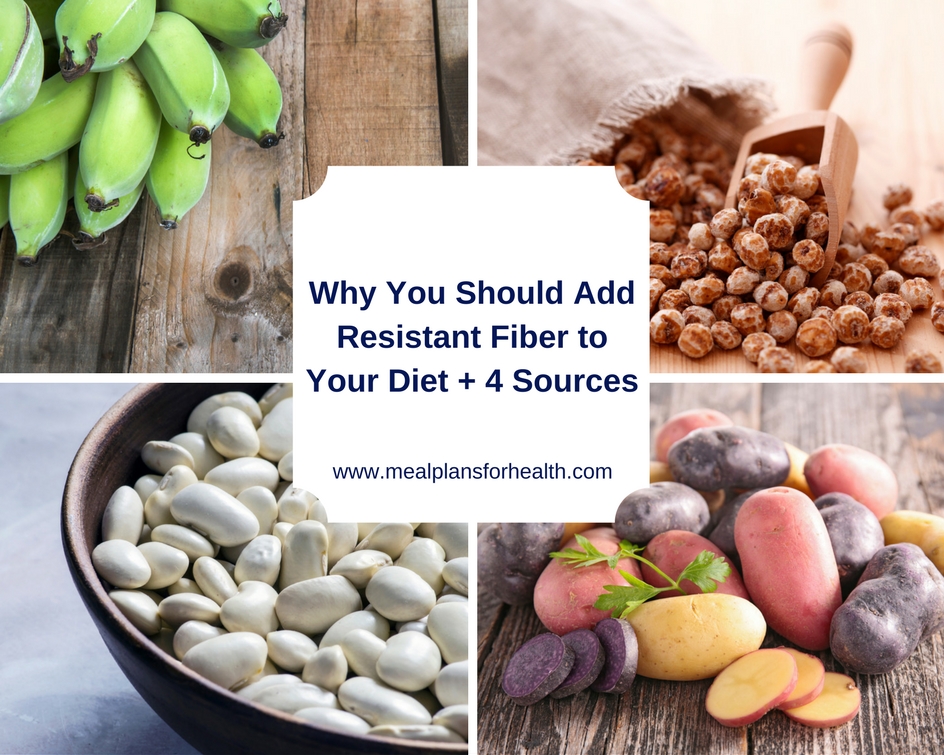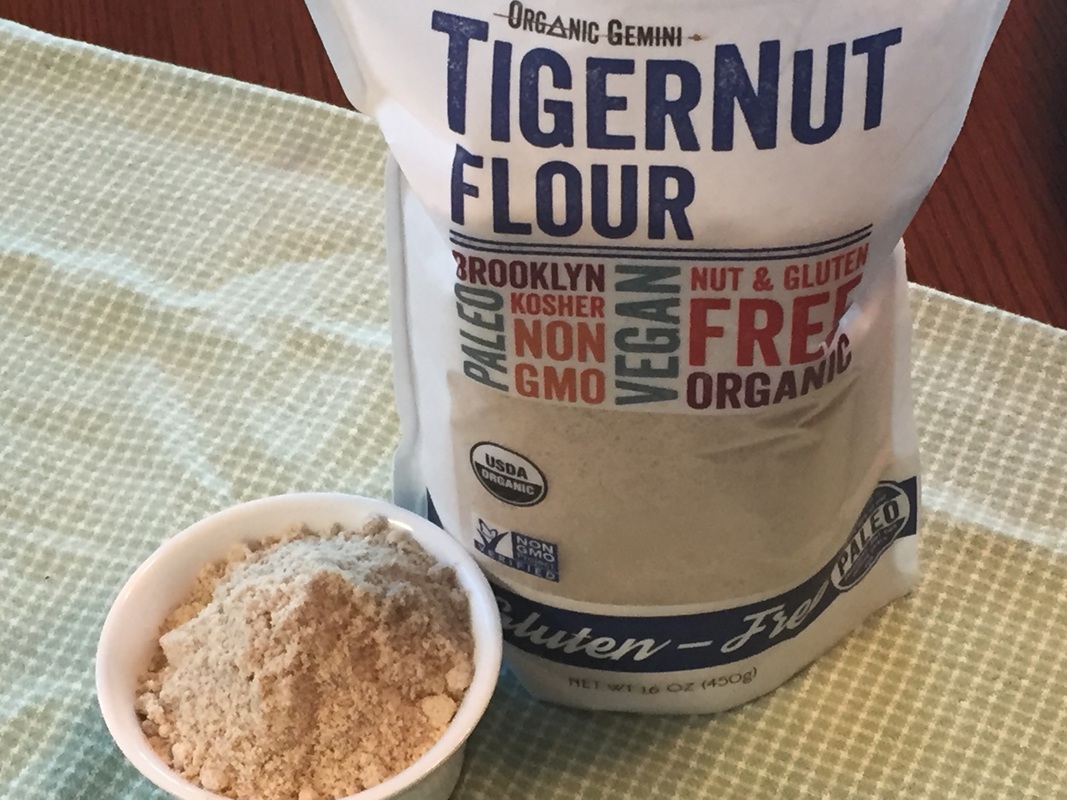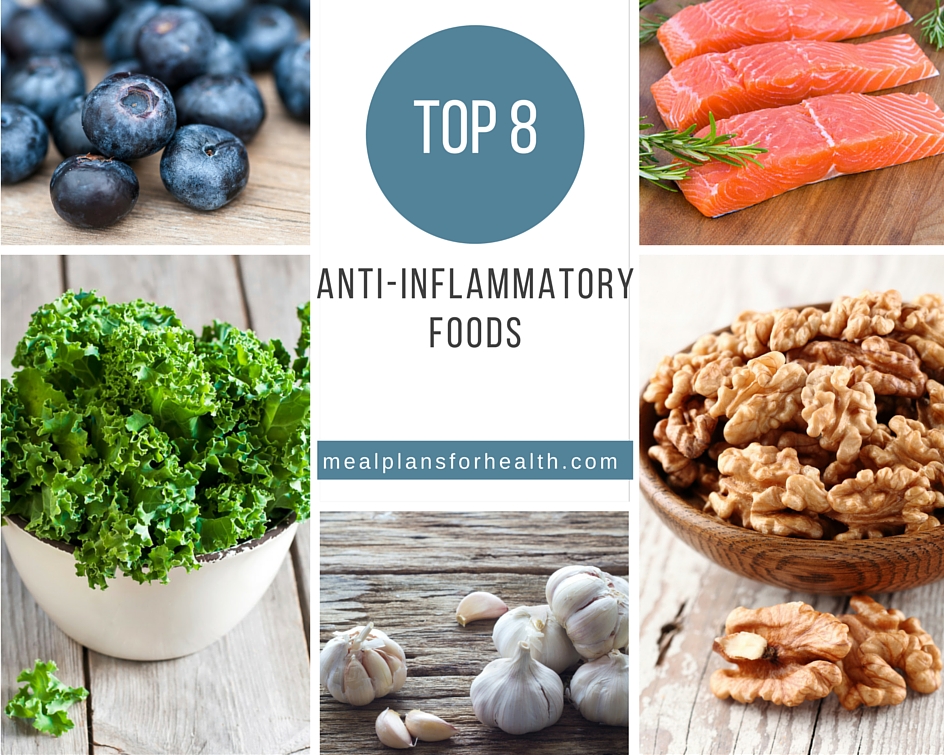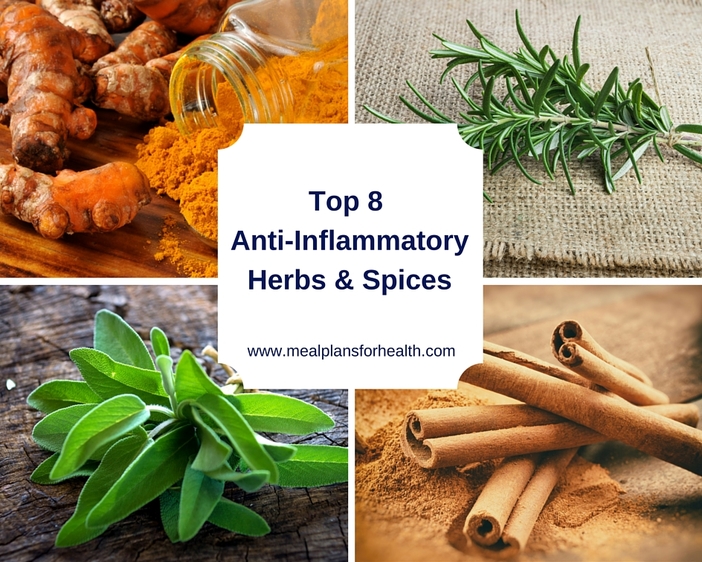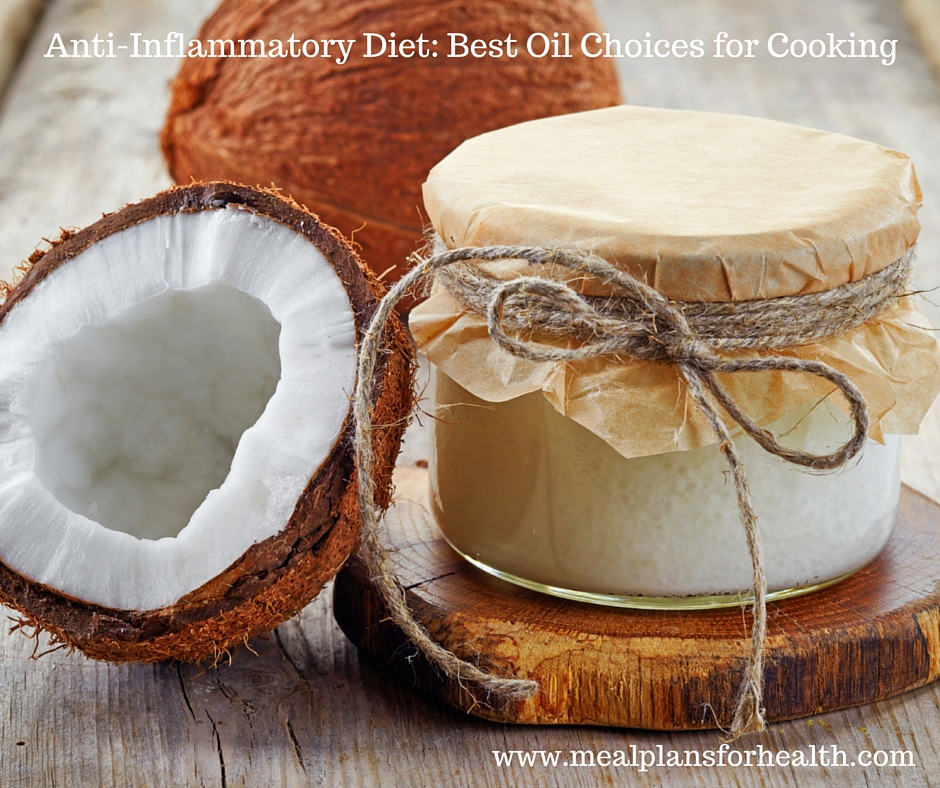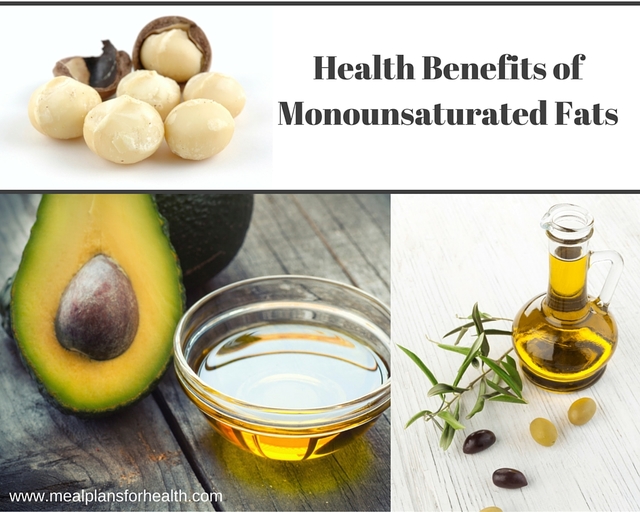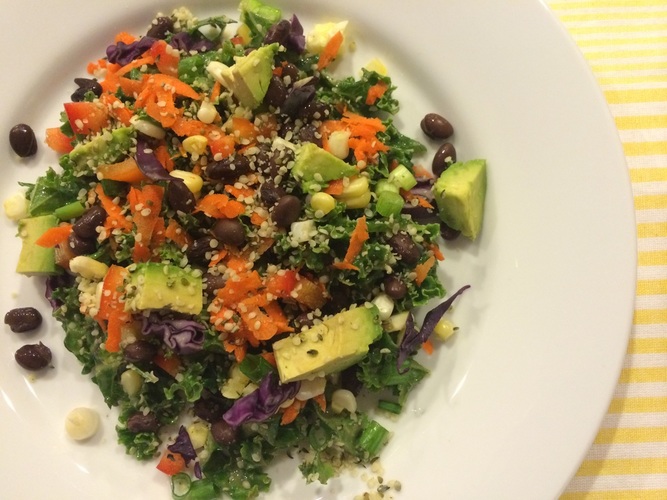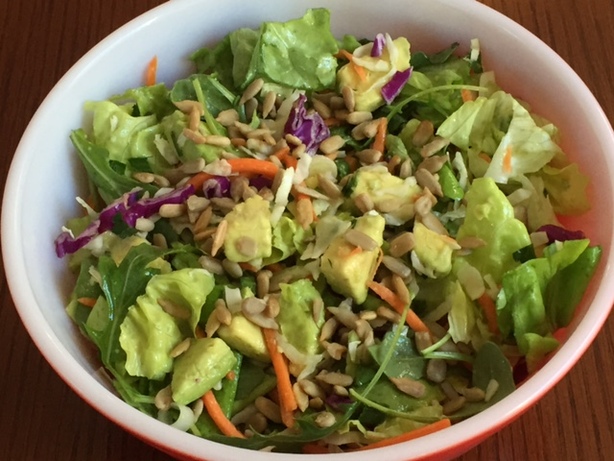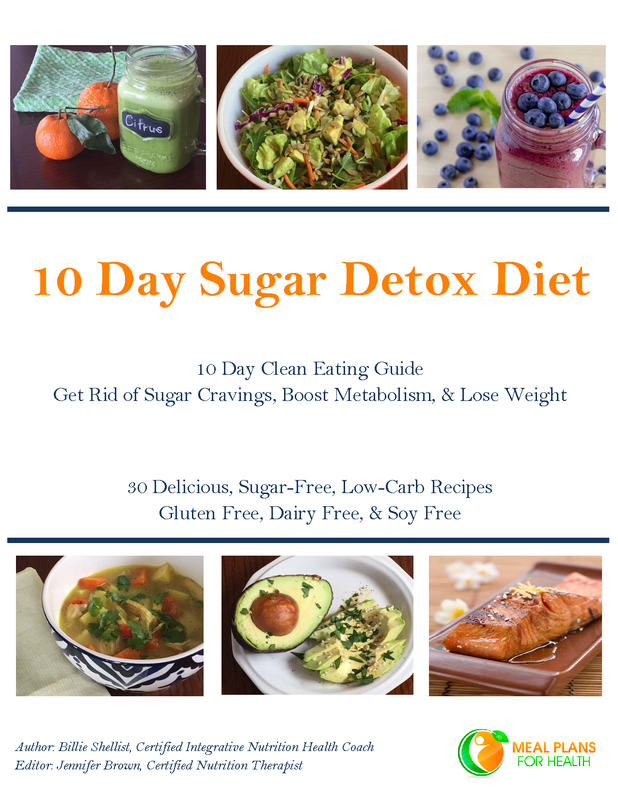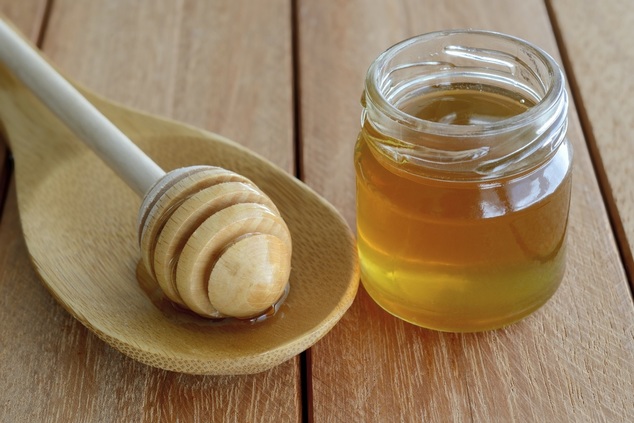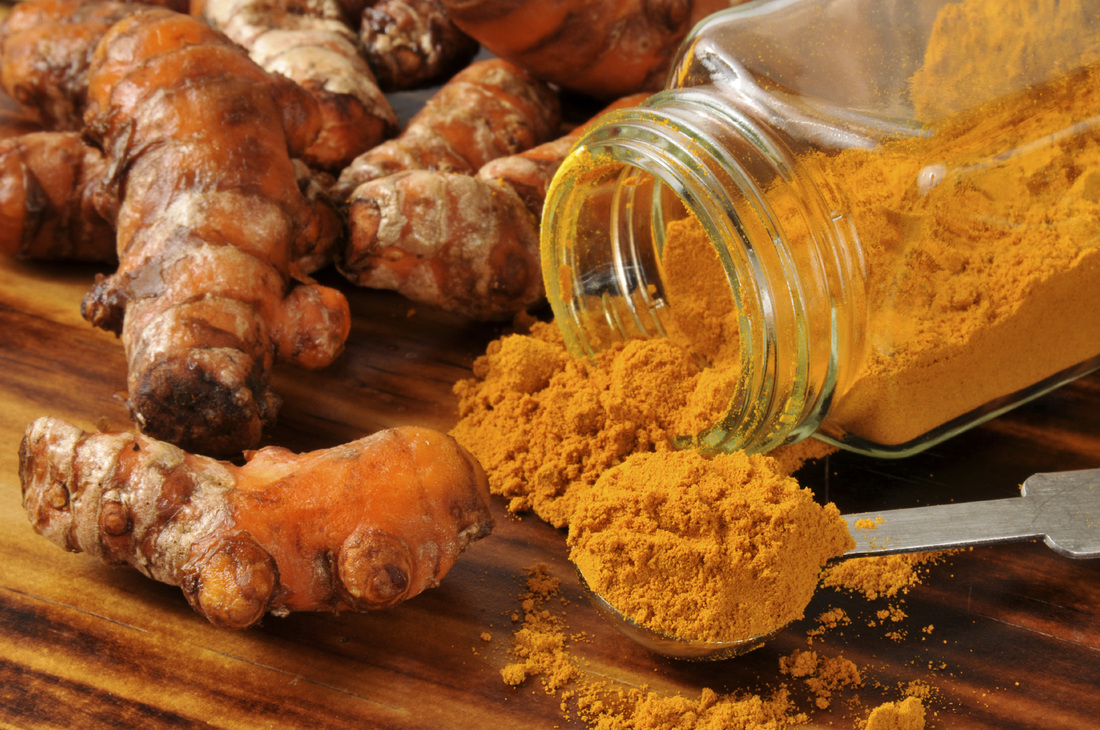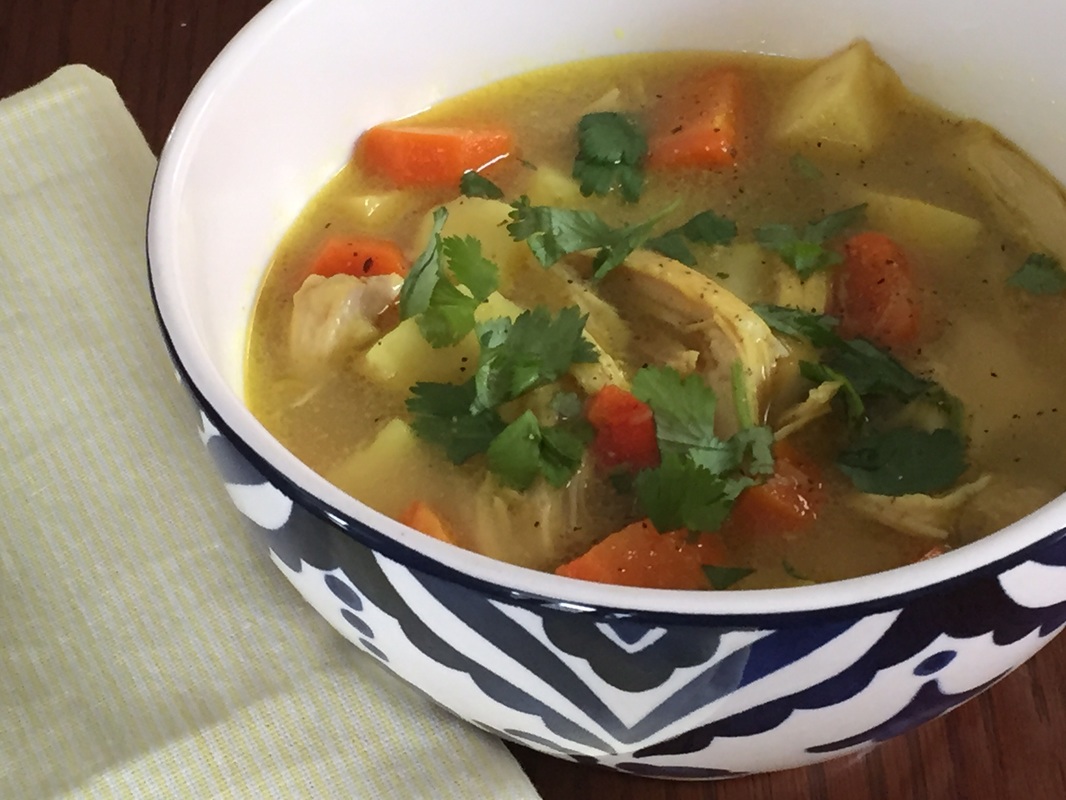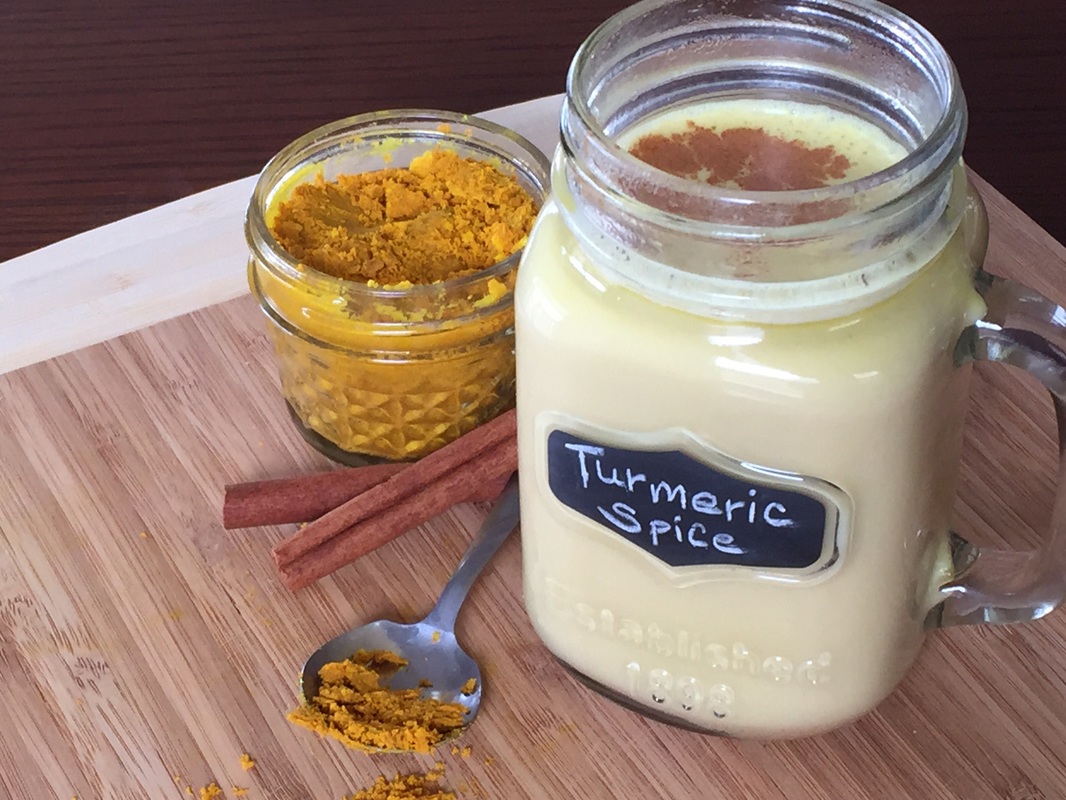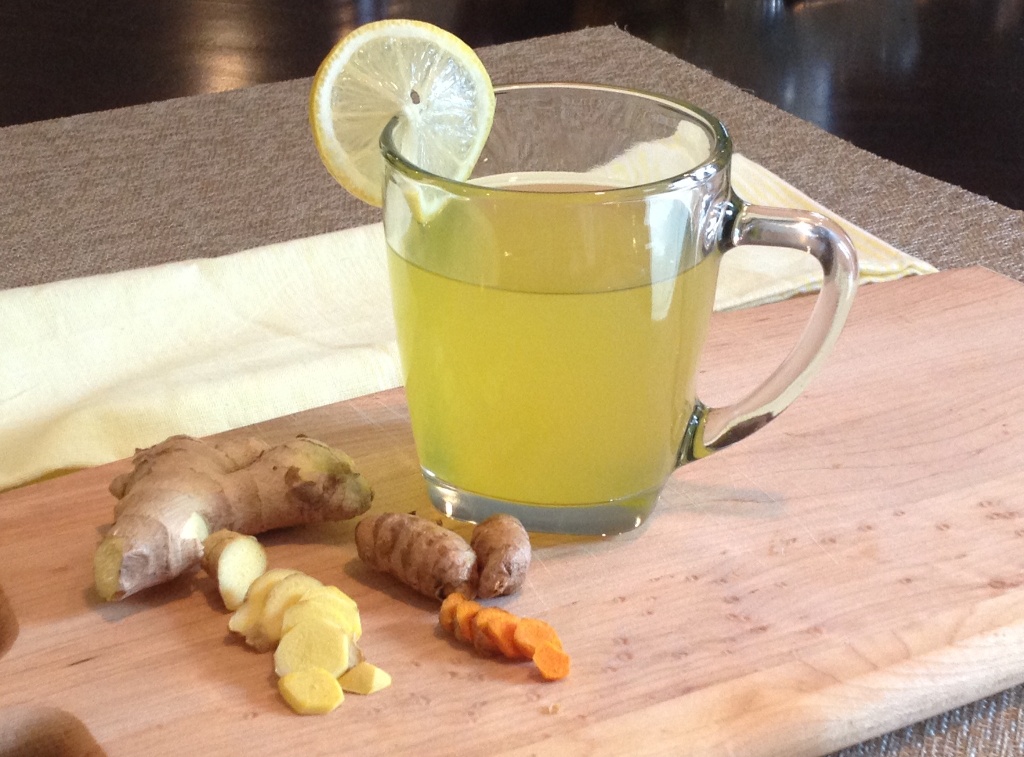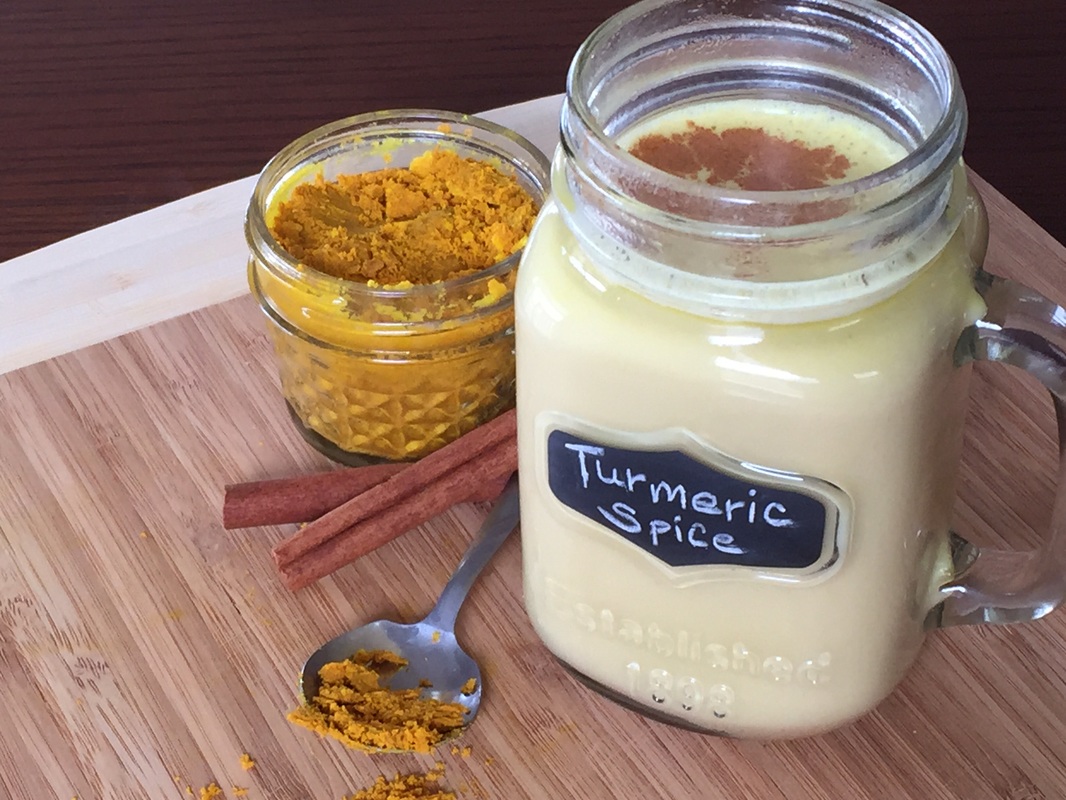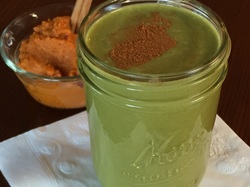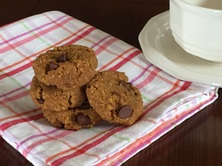|
Real pumpkin puree is one of my favorite health foods and something I like to enjoy year round, but especially during the Fall and holiday season.
Jen and I like to make our own pumpkin puree since one "pie pumpkin" yields quite a good bit of pumpkin and it is easy to make. Check out out blog to learn how to make your own Homemade Pumpkin Puree. But you can also find pumpkin puree in cans year-round at the store. Make sure to choose 100% pure pumpkin puree in these recipes and not canned pumpkin pie mix. So....if you love pumpkin as much as we do, check out some of our favorite recipes and let us know what you think....
3 Comments
Fall is here and it's my favorite season of the year by far! The warm sun, mixed with the cool air and a colorful, fall landscape to look over - you just can't beat it. But fall certainly wouldn't be complete without APPLES for me!
After living in a home with an enormous apple tree for several years that gave us boat loads of apples every fall, I had to get really creative with how many ways I could use up my harvest. These six recipes are just some of my favorites and I wanted to share them with you today. Each of these are low in sugar and carbs, gluten, dairy, and soy free, super simple to make, and amazingly tasty for your belly! I hope you and your family enjoy them as much as my family and I do. Gluten Free. Grain Free. Paleo. Dairy Free. Soy Free. Nut Free If you are looking for the ultra healthy sweet snack, try slowly baking sliced apples sprinkled with cinnamon to make apple chips. This recipe doesn't require a dehydrator, only an oven. These apple chips are the perfect snack on the go, ideal for kids lunches, and contain no added sugar - AWESOME SAUCE!
It's as simple as that! If you are ready to try some, follow the easy steps below and consider doubling the recipe since these may disappear very quickly:) Baked Cinnamon-Apple Chips (PRINT RECIPE): Serves 4 Ingredients: 2 large, organic apples of choice Ground cinnamon to taste Directions:
Let me know what you think friends! ~Billie Resistant fiber or resistant starch is the new kid on the block when it comes to healthy sources of dietary fiber.
This special type of fiber cannot be digested by the human body and passes through the small intestine mostly intact. When it reaches the large intestine or colon, it becomes food for the good bacteria making it a "pre-biotic". Pre-biotics are foods that feed the many strains of beneficial flora in our gut that comprise over 60% of immune system! Over the past several years there has been a surge of information about the importance of the gut microbiome and its connection to many of today's chronic illnesses like Alzheimers, MS, Fibromyalgia, Diabetes, Obesity, Depression, Anxiety, and digestive diseases like IBS, colitis, and Crohn's. When the good bacteria feed on the resistant fiber, they produce short chain fatty acids like butyrate which helps to reduce inflammation, boost metabolism, and improve stress resistance. This is just one example of the important role these good bacteria have and why it is so important to take care of our gut microbiome by avoiding foods that harm it and eating foods that nourish it. Health Benefits of Resistant Starch:
Best Forms of Resistant Starch for Your Diet:
If you've never tried resistant fiber before, start slow - maybe 1 tablespoon of flour in a smoothie or soup and work up to 3-4 tablespoons or to your tolerance. Or 1/2 cup of beans or cooled potatoes with lunch and 3/4 cup with dinner. Your tolerance is the level at which you can eat it and you don't experience bloating, gas, or stomach pain. You may experience this a little at first, but if it persists with even the small amounts of resistant fiber, you could have SIBO, or a more severe dysbiosis problem. If this is the case, I'd recommend working with a qualified functional medicine practitioner to do some testing and reestablish a more balanced gut flora. Check out our Gut Cleanse & Revive Program if you need some additional help in this area. One of our providers will work one on one with you to identify the root causes of your symptoms through functional nutrition labs and help you heal naturally. ~Billie References: 1. https://www.ncbi.nlm.nih.gov/pubmed/16644623 2. http://drchristianson.com/ 3. https://www.ncbi.nlm.nih.gov/pubmed/24499148 4. https://www.ncbi.nlm.nih.gov/pubmed/10535469 Grain Free, Nut Free Paleo Inspired Flour... Tiger Nut flour is my new obsession and the subject of today's What's That?! Wednesday post! Tiger nuts have a name that is very deceptive because they are actually not a nut at all - they are from the tuber family so they are a naturally grain-free, gluten-free, and nut-free food. Perfect for those sensitive to nuts and eating a grain-free diet!!
Tiger nuts are grown in Africa and are the underpart of a stem, similar to a root, that grows underground. Potatoes, tapioca, yuca, and cassava are also from the tuber family for example. In a recent Oxford study, tiger nuts were shown to have fueled up to 80% of our paleolithic ancestors diet. Here are some of the reasons why I love Tiger Nuts and Tiger Nut Flour:
Check out my new Tiger Nut Flour Zucchini Muffins for a fabulous recipe the whole family will love. It's perfect for a breakfast or snack on the go ! I'll be posted more tiger nut flour recipes soon...stay tuned and let me know what you think as you experiment on your own. ~Billie **IMPORTANT NOTE: I would not advise that you any forms of resistant starch if you have SIBO as it can feed the bacteria. For everyone else, resistant starch is a fabulous way to make your meals more hearty and reduce your snacking between meals. 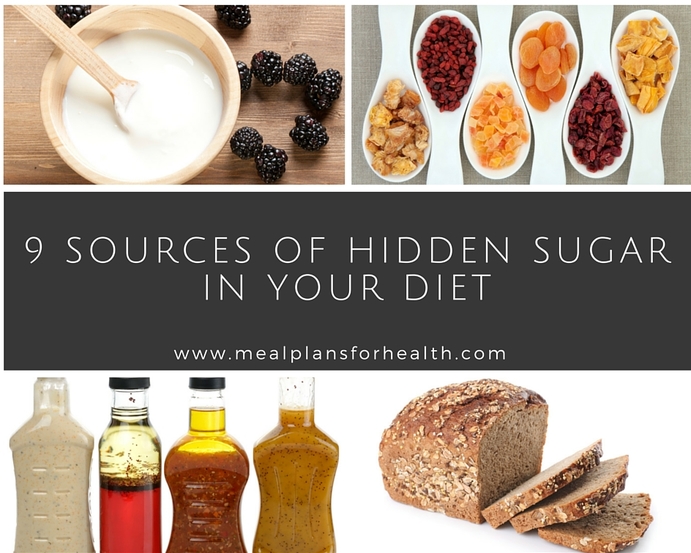 On this week's What's That Wednesday post, we discuss foods that may still be in your diet; foods you think are "healthy" but actually sabotaging your health and slowing down your metabolism and weight loss goals. Many of my clients tell me, "Ok Billie, so I eat fairy healthy already - I don't eat a lot of sugar, I avoid baked goods, candy, and soda. I eat whole grains and I also try to limit processed snack foods, but I still am not losing weight. What's the deal?!" I can relate to this because this was me most of my life until about 6 years ago. While I didn't exercise the best of eating habits in my childhood or teens, I did start to change my diet and "eat healthy" or so I thought in my 20's, but I still really, always struggled to lose weight and keep it off. Then I learned one simple nutritional rule - all simple carbs turn into glucose. Our bodies have a limited storage capacity for glucose so when you over-consume simple carbs and your blood sugar rises, one way your body compensates is to convert those glucose molecules to fat. That fat gets stored in your liver and adipose tissues (fatty tissues). This not only keeps you from losing weight but also puts you at risk for cardiovascular disease and diabetes. So, to switch your body out of the "fat storage" mode and into "fat burning" mode, its important to avoid sugar and simple carbs as much as possible in your diet. The food industry makes this difficult on us since sugar has so many names and gets slipped into just about everything these days, so you have to read every label carefully. Just because it says low sugar, sugar-free, organic, whole grain, or natural on the front of the box, it doesn't mean it's healthy. Check out my list to help you avoid some common culprits... 9 Sources of Hidden Sugar in Your Diet:
If you liked this blog, you may also like our eBook, 10 Day Sugar Detox Diet- a 10 day real food eating plan that helps you avoid added sugars and processed foods, boosts your metabolism, and kick starts your wellness goals. This eating plan includes over 30 delicious recipes, a 10-day eating plan, and grocery shopping lists. So what are you waiting for?! To preview the first few pages of this eBook as well as the recipe list and pick up a copy, simply click here. ~Billie Most of today's modern diseases like diabetes, heart disease, and the extraordinary amount of autoimmune conditions like: rheumatoid arthritis, fibromyalgia, chronic fatigue syndrome, Lyme disease, multiple sclerosis, Crohn's disease and IBS all have one thing in common - chronic inflammation!
Inflammation is our body's protective and healing response to injury or invasion. The type of inflammation that we all know and can relate to includes pain, swelling, redness, heat, and fever. But when inflammation persists and/or the immune system becomes 'overactive,' it can damage the body and cause illness not only acutely, but also slowly and silently over time. The main causes of inflammation in our bodies are: disease (pathogens, bacteria, virus, fungus, etc), excess adipose/fat tissue, genetics, smoking, stress, environmental toxins, and FOOD! The foods that have been shown to increase inflammatory responses the most include: refined carbohydrates, sugars, most processed and pre-packaged foods, trans fats, non-organic produce, grain fed animal protein, as well as gluten, dairy, and soy. Avoiding the foods listed above is the most important thing to do, but in order to combat and reverse chronic inflammation, you need to include foods that will nourish your immune system, boost your antioxidant and nutrient intake, and heal your body. And in this week's What's That?! Wednesday I give you eight foods to start with plus a few recipes for each of these foods so that you can easily incorporate them into your diet! Check it out... Top 8 Anti-Inflammatory Foods:
I'm sure this gives you plenty of recipes to get started with, but if you need more, we offer Anti-Inflammatory Meal Plans and Cookbooks that are packed with recipes that your whole family will love! Thanks again for tuning in to this week's What's That?! Wednesday post. Our anti-inflammatory eating guidelines will continue into next week's post, so stay tuned for more information and inspired recipes to come! ~Billie References: 1. University of Maryland Medical Center 2. Cancer News Some of the most potent, anti-inflammatory foods on this earth are in the form of herbs and spices. They can add loads of antioxidants, minerals, and vitamins to your meals plus they enhance the flavor profile as well:) Including these in your diet regularly can boost detoxification, help to stabilize blood sugar, combat oxidative stress and early aging, and lower inflammatory symptoms that cause pain, fatigue, and brain fog. Adding herbs and spices to your meals is an instant nutritional and flavor upgrade for your diet without adding any calories!!
In today's What's That?! Wednesday post, I will share the top 8 anti-inflammatory herbs and spices and their health benefits, as well as give you several of my favorite recipes so you can easily and deliciously incorporate them into your diet! Eating a diet rich in anti-inflammatory foods is recommended for anyone suffering from a chronic illness, an autoimmune disease, Lyme disease, diabetes, or heart disease. Inflammation is at the core of all of these illnesses and food can be the best and most potent medicine to bring you back to health! Check it out... Top 8 Anti-Inflammatory Herbs & Spices:
Which recipes sound best to you? Did you find this information helpful? I'd love to hear your comments:) Thanks for tuning into another What's That?! Wednesday post...I've got more Anti-Inflammatory Nutrition coming up on next week's edition. ~Billie *References: When it comes choosing to healthy oils, there are two important things to consider; the type of fat (pro-inflammatory vs. anti-inflammatory) and it's heating capacity. Its very important to understand that anytime you heat an oil, you risk overheating it past its smoke point, which can cause oxidation and lead to the formation of carcinogens and other unhealthy compounds that are toxic to consume.
Additionally, the type of oil or fat you use is enormously important. Much of our food supply, especially processed and restaurant foods use harmful polyunsaturated oils that have a high ratio of Omega 6 to Omega 3 fatty acids like corn, soy, and sunflower oils. These oils have a 54:1 to 71:1 ratio and current research clearly shows that it is this skewed ratio that may be one of the biggest contributing factors to the rising number of autoimmune diseases like morbid obesity, diabetes, fibromyalgia, Parkinson's, Alzheimer's and more. Check out our blog, Omega-6 & Omega-3 Fats for an Anti-Inflammatory Diet to learn more and see our recommendations on the healthiest and most harmful choices in this category. Now that we've covered the two most important criteria for choosing a healthy oil, the rest of this week's What's That?! Wednesday post will walk you through my recommendations for the healthiest oil choices that can help to reduce inflammation and prevent disease. Plus several recipes to help you incorporate these oils into your diet... Best For High Heat Cooking:
Best for Medium-Heat Cooking:
Best for No-Heat Cooking:
Thanks for tuning into this week's post...next week, we will continue the Anti-Inflammatory Diet theme. I will be sharing the Top 10 Anti-Inflammatory Herbs & Spices as well as several new recipes so you can get these medicinal foods into your diet with ease! ~Billie Unlike saturated fats, there is not much controversy around the health benefits of monounsaturated fats. Research shows that populations that consume high amounts of monounsaturated fats, like Greece and Italy, have the lowest heart disease rates in the world. This is why many cardiologists have recommended the "Mediterranean diet" to their patients for several years now in order to reduce the risk of heart disease. In this week's What's That?! Wednesday post, we share the benefits of these healthy fats that go beyond an improved cardiovascular profile.
Health Benefits of Monounsaturated Fats:
Foods Highest in Monounsaturated Fats:
Other nuts like almonds and cashews also have some monounsaturated fats, but the best and healthiest sources are those listed above. I recommend 3-7 servings of total fat per day - monounsaturated, saturated, and omega 3 & 6 fats all combined. You want to get a little of each kind of fat into your diet each day. You may also want to read our previous posts on healthy fats: Omega-3 & Omega-6 Fats for an Anti-Inflammatory Diet 4 Sources of Healthy Saturated Fat Hope you found this helpful and thanks for tuning in! ~Billie Salads are a great way to add whole, nutrient-dense foods into your eating plan but its important to understand that not all salads are created equal! In fact most of the salads in mainstream restaurants are loaded with inflammatory fats and sugar. When you see ingredients like: "buffalo", "ranch", "bacon", "crispy wontons", "candied walnuts", "dried cranberries", or "balsamic or raspberry vinaigrette", these salads are more likely to pack on the pounds and slow down your metabolism than boost your nutrition or help you lose weight.
While this doesn't mean you have to stick to plain old boring mixed greens, it may mean you have to venture outside your comfort zone to try some new combinations. A nutrient dense, entree salad can be an amazing addition to your diet and the good news is that we are experts at building them! Check out our simple steps below to build your own: How to Build a Nutrient Dense Salad:
Thanks so much for tuning in to this week's What's That?! Wednesday post. Feel free to share your favorite salad recipes with us or comment on the information posted below. In good health, Billie This is a great, nutrient dense, "base salad" recipe that I use often. It's ingredients will help cleanse your gut and support your body’s detox pathways while keep you feeling full and satisfied! You will also get a nice boost of healthy fats from the avocado, olive oil, and sunflower seeds. Great on its own as a side salad or add almost any choice of clean protein on top for an entree salad. I like grilled or sauteed organic chicken breast, wild caught salmon, or boiled wild caught shrimp.
This salad is one of over 30 delicious, whole food recipes we have in our new 10 Day Sugar Detox eBook. Boost your nutrition, increase your metabolism, and burn fat with this simple 10-day eating plan. This ebook also has two weeks of meal plans with "make-ahead" preparation tips and grocery shopping lists to save you time! Simple Detox Salad (PRINT RECIPE): Serves 4 Ingredients: 4 cups baby arugula 3 cups light greens (butter lettuce, romaine, etc), chopped 1-1 ½ cups coleslaw mix or shredded cabbage + 1 carrot, shredded 1 heaping ¼ cup parsley, chopped 2 green onions, minced 1 large or 2 small avocados, pitted, peeled, and chopped or sliced ¼ cup sunflower seeds Apple Cider Vinaigrette: 4 tablespoons olive oil or flax oil 2 tablespoons apple cider vinegar ½ teaspoon sea salt 4-6 drops dark liquid stevia OR 1 tablespoon 100% pure maple syrup or raw honey Directions:
Enjoy & happy detoxing! ~Billie 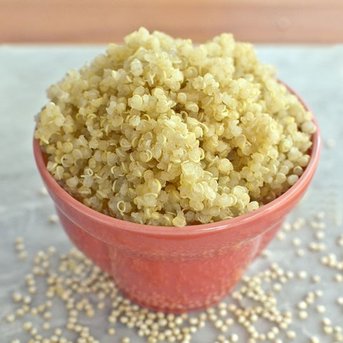 As many of you know, Jennifer and I are not fans of "No Carb Diets" such as Traditional Atkins or Strict Paleo. While cutting your overall carb intake is one of the most popular ways to cut calories and lose weight - this approach will only work in the short term before metabolic imbalances start to derail your goals and halt your weight loss progress. The result of these imbalances are increased cravings for carbs and sugar, increased fat storage, and decreased ability to build strong muscles - when your body stays in this zone you get what is called weight loss resistance. We see this often with people who have spent their whole life "dieting" and following the eat less, exercise more strategy. They are eating low fat and low carb and exercising 5 days a week but still not seeing results on the scale. Does this sound familiar? It did to me, in fact I was one of these people and over time I found that it was harder and harder to lose weight until I converted to a whole food based, anti-inflammatory diet that helped to balance my hormones and metabolism naturally. When you achieve metabolic balance (hormonal balance) by eating whole foods in the right amounts at the right times of the day, including carbs, your cravings will disappear, you will start to burn fat, increase muscle, and consistently sleep soundly. Sound amazing?! One of them most important pieces of an anti-inflammatory, hormone-balancing diet is nutrient dense, fiber based carbohydrates. This week's What's That?! Wednesday post will help you understand which carbs fall into that category and how to incorporate them into your diet. Carbohydrates: Fructose Rich vs. Fiber Rich A moderate carbohydrate diet focused on nutrient-dense foods rich in vitamins and fiber is what we typically advocate for most of our clients with some exceptions.** The type of carbohydrates we eat is key in reversing inflammation, regulating blood sugar, keeping your hormones in balance, and supporting a healthy digestion - all of which you need in balance in order to lose weight and maintain it without having to constantly resist strong cravings for sweets and carbs. Eating the right type of carbs also turns off your "fat storage hormones" like insulin and cortisol to help you burn fat and use carbs for energy for your muscles and brain- the exact combination of what you need to lose weight. But not all carbs are created equal - so which carbs are best? Check it out...its long, but packed with awesome information and free recipes. "Friendly/Good" Carbs (Fiber Rich): The most important thing to understand is that carbs are made up of fructose and/or fiber. Fiber is the part of the carb that we cannot digest and therefore it helps us to lose weight, remove toxins, improve regularity and support the immune system. Fiber filled carbohydrates are also called complex carbs or as we like to call them "friendly carbs/good carbs". Its important to understand, there are 3 types of fiber - soluble, insoluble, or resistant fiber.
"Bad Carbs" (Fructose Rich): Fructose is a simple carb that is processed by the liver - too much fructose and the liver has to work overtime. When the liver is overtaxed, insulin gets releases to help clean up the blood glucose and as we know, insulin is a fat storage hormone. So instead of sending glucose to your muscles for energy, increased insulin sends it to your fat for storage. This leads you to gain weight, feel tired and fatigued (ever experience an energy crash after consuming an indulgent dessert?), and mentally sluggish. To make matters worse, your body responds to this by increasing its cravings for these same, fructose-rich foods, perpetuating the cycle of food addiction, overeating, and obesity. Worst Choices for "Fructose Rich Carbs" : High Fructose Corn Syrup, Sugar, Processed White and Wheat Flours, Processed Corn, Pre-Packaged "Low-Fat"/"Diet Foods" (they replace carbs with sugar), Pre-Packaged Snacks and Treats, Baked Goods, and Cereals. These types of carbs give carbs a bad name and should be avoided completely or highly limited. Best Choices "Fructose Rich Carbs": Berries (lowest sugar), Apples, Bananas, Grapefruit, Pomegranates, Kiwi, Peaches, Pears, Plums, Mango, Pineapple, Melons, and Oranges. If you are trying to lose weight keep these fruits down to 1/4 cup/day and pair them with some greens. Focusing on the right carbs is one of the most important changes to your diet you can make. If you feel overwhelmed, start by changing ONE meal - breakfast - the most important meal of the day! Swap your toast, bagel, croissant, muffin, pastry, granola or cereal for a Simple Green Smoothie and use an unripe banana to help ward off hunger and cravings and keep your energy up. Need a Little More Guidance? We offer a few functional nutrition coaching services to help you boost your nutrition, reverse food addiction, and help balance your hormones so that you can lose weight without cravings and without sacrificing taste! Check out our Metabolic Recovery Program. Or to schedule a free 15 minute phone consultation, email us here, and we will spend 15-20 minutes on the phone with you and give you a couple tips to get you started in the right direction! "Friendly Carbohydrate Recipes": Kale-Apple-Carrot Slaw with Apple Cider Vinaigrette Quinoa-Zucchini Patties with Tzatziki Sauce Sweet Potato Chips Asparagus & Shallot Tossed Quinoa Sweet Potato & Quinoa Patties with Creamy Thai Vinaigrette Kale Refresh Salad with Tahini Dressing Baby Red Potato & Green Bean Salad with Lemon-Dill Dressing We are big fans of friendly carbs (as you can tell) and offer many more recipes on our blog and even more recipes inside our Monthly Meal Planning Membership. If you are looking to balance carbs, lose weight, and cook some delicious food in the process - check out our Anti-Inflammatory Meal Plan. Adios faithful readers. In good health, Billie & Jen **Exceptions may include women who are pregnant or breast feeding, high-intensity athletes, and those with certain fungal infections or chronic candida. Another exception would be those on short term (2-4 week) detox or elimination diets. You may also like our new 10 Day Sugar Detox eBook. A great 10 day eating plan packed with friendly carbohydrates, clean proteins, and healthy fats.
This week's What's That?! Wednesday post is the third in our series on the topic of sugar. With so much contradicting information out there, it can be difficult to weed through the fiction and understand what sweet foods are safe or at least acceptable in small quantities in our diets.
I can tell you from my own experience and from working with my clients on sugar addiction, the answer to this question will vary significantly from person to person. Keep in mind each person has their own unique biochemistry and therefore, our bodies will each respond in slightly different ways to different types and sources of sugar - even "natural" sugars. One sensible way that everyone can add a touch of sweet to your diet is through eating some low-glycemic fruits and vegetables that are naturally sweet. Try organic berries, apples, bananas, goji berries, raw coconut, cacoa, carrots, sweet potatoes, squashes like pumpkin or butternut, or some fresh, organic corn. A good serving size is 1/2 cup of low-glycemic fruits each day paired with some protein, fiber, and/or fat to help slow down your body's sugar response and keep additional cravings for more fruit at bay. Examples: apple slices with raw almond butter, berries in a smoothie with an avocado and/or some plant based protein powder, 1/2 of a sweet potato with some grass-fed ghee or coconut oil, then sprinkled with cinnamon, or try our Banana Protein Pancakes. When you do decide to eat some sugar outside of these sources, we recommend that you go with a natural sugar choice and stick to only one serving. Avoid products like cane sugar, brown sugar, and high fructose corn syrup that have been highly processed and refined and contain toxic, GMO ingredients that can drive up inflammation. Choose something that is organic, similar to its natural form, and minimally processed. Here are our top 4 recommendations that meet those criteria best in our opinion... 4 Natural Sweeteners We Recommend:
Also, if you missed the first two weeks of this series on sugar, check out our posts: 10 Tips to Get Rid of Sugar Cravings and 6 Reasons to Avoid Artificial Sweeteners to get caught up! If you liked this blog, you may also like our new eBook, 10 Day Sugar Detox Diet, over 30 recipes that are low in carbs and sugar free plus 2 (5-day) meal plans with make-ahead tips and grocery shopping lists to save you time! Stay tuned for next week when we cover: 5 Sources of Hidden Sugar in Your Diet. Until then, take care friends! ~Billie References: 1. Department of Nutrition, University of California, Davis, March 2003 2. BR Med J: Clinical Res. Ed, June 1985 3. Department of Applied Nutrition, Defense Food Research Laboratory, March 2013. 4. European Journal of Microbiology and Immunology, December 2015. 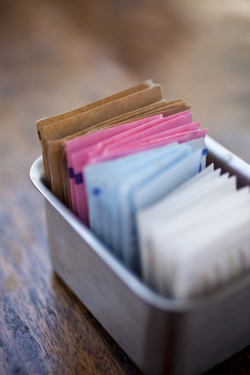 With obesity continuing to skyrocket each year, doctors are now estimating that this is the first time in history that our children will have a shorter average life span than their parents. Think on that for a minute... There is no doubt that one of the main culprits to this epidemic is the increasing amount of sugar in our diets! In fact, the average person in 1850 living in the US would only consume 1 pound of sugar each year compared to today's average American who eats 150 pounds of sugar a year!! WOWZA!! While this insane increase in sugar consumption is largely to blame for our current health crisis, many conventional medical and nutritional practitioners have overlooked the role artificial sweeteners play as a potential driver for this epidemic. So in this week's What's That?! Wednesday post we discuss the dangers of artificial sweeteners and give you six very good reasons to completely remove them from your diet. Strong evidence, from numerous studies, shows that artificial sweeteners are highly addictive chemicals (not real food) that rewire your brain chemistry, decrease your metabolism, and make it very, very difficult to lose weight and burn fat. Some of these studies show that these sweeteners can increase your risk for weight gain, pre-diabetes, type 2 diabetes, and cardiovascular disease as much as regular sugar. So while manufacturers love to position these products as "guilt-free", "healthy" alternatives, the reality is they are doing more damage to your health and your weight management than you know! 6 Reasons to Avoid Artificial Sweeteners:
Artificial sweeteners can be found in over 8,000 food products currently on the market in the US alone, so we highly recommend that you read labels very closely for these ingredients. The biggest culprits include: diet sodas, chewing gum, low-fat and sugar free yogurts, sugar or fat free coffee creamers, low-fat and sugar free diet foods of any kind including "fat free" or "low calorie" salad dressings, condiments, snacks, and sweets. The names of these sweeteners include: Aspartame, Equal, Nutra-Sweet, sucralose, Splenda, sacharin, Sweet & Low, sugar alcohol, glycerin, maltitol, sorbitol, and xylitol just to name a few popular ones. For a much more complete list of artificial sweetener names, click here. Lastly, most important thing you can do is to avoid processed and packaged foods and eat a diet of real foods with plenty of fresh produce. It is also helpful to purge your pantry, fridge, and freezer to get rid of these temptations in your house. Remember, you have to treat this like it is...an addiction! If you need some more, clean, low-carb and naturally sugar-free recipes infused into your weekly eating plan, check out our new eBook, 10 Day Sugar Detox! It has over 30 real food recipes that are delicious and easy to make and will help you decrease the amount of sugar, hidden sugars, and artificial sweeteners in your diet! It also comes with 2 (5-day) meal plans with a "make-ahead" plans and grocery shopping lists to save you valuable time and energy! This eBook can help you boost your metabolism, get rid of sugar cravings, and lose some weight! You may also find our blog,10 Tips to Get Rid of Sugar Cravings, helpful as you make this transition. Plus, in the next edition of What's That?! Wednesdays, we will give you a breakdown on the different sugar sources from real food, which are the best choices, and which to avoid! Stay tuned friends... In good health, Billie References: 1. PLOS ONE, Intense Sweetness Surpasses Cocaine Reward, 2007 2. Physiology & Behavior, 1988 & 1990 3. Journal of Biology & Medicine, 2010 4. Nature, 2014 5. American Journal of Clinical Nutrition, 2013 6. Schwartz, GR. Aspartame & Breast Cancer & Other Cancers, 1999 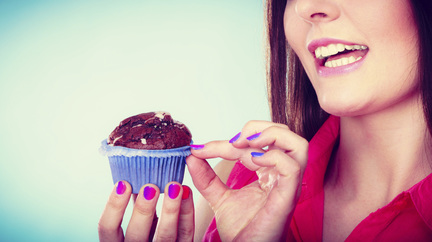 One of the most common things I hear from the clients I work with is, "I have such strong cravings for sugar and carbohydrates." or "...if I could just get rid of these sugar cravings, I think I could follow through on my healthy eating plan." If this resonates with you, you are not alone. In fact research shows that the average American eats between 3 and 5 pounds of sugar each WEEK! Holy cow! Back in the 1800's, people would eat only 10 pounds of sugar a YEAR! The USDA estimates that most of this sugar comes from processed and pre-packaged foods that contain refined sugar as well as sugar loaded beverages like: soda, fruit juice, cakes, cookies, and candy. A study in the American Journal of Clinical Nutrition proved that the refined sugar found in these foods was just as addictive as cocaine or heroin. When you eat sugar, your brain releases tryptophan, a precursor to serotonin, which is a neurotransmitter that acts as an anti-depressant and makes you feel good and happy. But that feeling only lasts a little while until the body crashes from the sugar high. So in order to increase serotonin and help you feel better again, your body signals cravings for MORE sugar! This vicious cycle is not your fault, these foods are crazy addictive, but that doesn't mean that you have to stay on this crazy sugar ride forever. There are some simple steps you can take to get rid of this addiction, check out this week's What's That?! Wednesday post for... Top 10 Tips to Get Rid of Sugar Cravings:
If you found this post helpful, stay tuned next week when our new eBook, 10 Day Sugar Detox Diet, goes on sale Wednesday, January 27th! This book is packed with over 30 real food, sugar free recipes that you and your family will love! I've even included two (5-day) meals plans with shopping lists to help you incorporate the recipes into your daily life with ease! I really love how this eBook turned out and I know you will love it as well! You can even enter to win 1 of 4 free 10 Day Sugar Detox Diet eBoooks that we will be giving away to our community next week. Click here to learn more and enter to win! Thanks for tuning in and I look forward to connecting with you next week! ~Billie Those of you who know me or have worked with me as your health coach know that turmeric might just be my favorite medicinal food - and for good reason! Not only have I experienced its powerful anti-inflammatory effects myself and with many of my clients, but there are several large scale, quality studies that clearly demonstrate its potent medicinal benefits. Curcumin is the active, medicinal ingredient in turmeric root, a root that is bright orange, has spicy and sweet notes and looks similar to ginger root. It has been used in Asian cultures for over 5,000 years to treat an array of inflammatory conditions. Remember that inflammation is the body's response to injury or invasion and while some inflammation is necessary to ward off pathogens and repair damaged cells, inflammation can become damaging when it continues long term and when the body inappropriately sends the immune system to attack its own tissues. These inflammatory diseases include: heart disease, IBD & IBS, rheumatoid arthritis, lupus, multiple sclerosis, cancer, diabetes, Alzheimers, fibromyalgia, and Lyme disease-just to name a few. In this week's What's That?! Wednesday post, I'm super excited to share some of turmeric's/curcumin's many health benefits that can help to prevent and/or treat some of the top inflammatory diseases of our time. I'll also give you some ideas of how to incorporate this medicinal root into your diet with ease! Health Benefits of Turmeric/Curcumin:
How to Buy, Supplement, & Cook with Turmeric: Ground turmeric can be found in all grocery stores and fresh turmeric root can be found in natural foods stores and some mainstream grocery chains. It is a root spice that looks similar to and usually located near the fresh ginger root. You can buy turmeric or curcumin supplements at most natural food and vitamin stores. Look for one that is made from organic ingredients and contains at least a small amount of black pepper to improve absorption. You can also swallow a few whole black peppercorns with your supplement to enhance the effect. Take these with a meal that includes fat and look for a supplement that is between 250 and 500 mg. Take 1-3 times daily depending on your health concerns. Turmeric can interfere with anti-coagulants and some non-steroidal anti-inflammatory drugs so always consult your physician before adding this supplement to your routine. I like Gaia Brand: Turmeric Supreme. Get lots of this golden root into your diet as well - turmeric can be added to many more dishes than just curries which are typical. Try adding it to other soups and stews, casseroles, sweet potatoes, roasted vegetables, eggs, organic chicken and teas. Jen and I use turmeric in many of our recipes, so consider our Anti-Inflammatory Meal Plans to help you boost your intake of this healing spice! Here are a few recipes for you to get started in your exploration... Enjoy! ~Billie **References:
American Cancer Society: http://www.cancer.org/treatment/treatmentsandsideeffects/complementaryandalternativemedicine/herbsvitaminsandminerals/turmeric Pub Med: http://www.ncbi.nlm.nih.gov/pubmed/?term=curcumin Anti-Inflammatory Tea. Sugar Free. Vegan. Delicious. Turmeric tea is a standard and popular beverage throughout Asian and India - often called "golden milk", this super delicious beverage is loaded with anti-inflammatory properties and perfect with those suffering from inflammatory related diseases. I make sure to get a hefty dose of turmeric in everyday to manage my symptoms while battling Chronic Lyme Disease - I find that it helps reduce pain and swelling, clear a "foggy" brain, and boost my body's ability to detoxify. You can head on over to our blog, 7 Health Benefits of Turmeric, to learn more about this.
About 8 months out of the year, I crave a warm beverage in the late morning or afternoon and I've found this to be the perfect choice for me! Typical lattes contain 10 or more grams of sugar or artificial sweeteners and this latte comes in under 1 gram if you use stevia (which I use and recommend). I started experimenting with "golden milk" recipes about a month ago and combined several elements of a few recipes to come up with this recipe. It is absolutely my new favorite beverage and acts more like a dessert or sweet snack for me! Not only does it have under 1 gram of sugar, but it has a rich and creamy flavor that makes me feel like I'm having something similar to a chai tea latte. I'm confident you will enjoy it as well! This recipe uses a turmeric paste that you make and store in the fridge. Turmeric is absorbed better if you couple it with a small amount of black pepper and add some coconut oil since turmeric is fat soluble - this is why I like using the paste! Turmeric Spice Latte (PRINT RECIPE) Serves 1 Ingredients: 1 ½ cups unsweetened non-dairy milk of choice (I like coconut or vanilla almond) ½ - 1 teaspoon turmeric paste* ¼ teaspoon ground cinnamon ¼ teaspoon ground ginger ½ teaspoon pure vanilla extract 4-6 drops liquid stevia or ½ teaspoon honey or agave (using honey or agave adds 2.9 grams of sugar) Turmeric Paste*: 3 tablespoons ground turmeric 3 heaping tablespoons coconut oil ½ teaspoon ground pepper ¼ cup filtered water Directions:
*Store paste in the fridge for up to 2 weeks. I recommend using a glass jar for storage as turmeric is likely to stain your plastic ware. In good health, ~Billie **Recipe inspired by both Andrea Nakayama's Turmeric Tea (www.replenish.pdx) and "Golden Milk Turmeric Tea" from www.happyhealthymama.com.  The holiday season is filled with temptation after temptation when it comes to food and drinks! Everywhere you turn there is another box of fresh baked goodies or a candy bowl filled with your favorite treats! Not to mention the many social gatherings you look forward to this time of year that often revolve around rich foods and make it super easy for us all to overindulge a bit. Many of us say to ourselves, myself included, "I'm so good all year long! I deserve this!" But it turns out that while giving yourself "time off" from your healthy diet for "good behavior" seems like an easy justification in the moment, its more difficult to justify the 5 extra pounds staring back at you from the scale on January 1st! UGH! Not a great way to start a new year, right?! You've worked hard to eat healthy all year long, end the year strong and full of pride! Don't worry about losing weight during the holiday season, just focus on maintaining it. In this week's What's That?! Wednesday post we want to help you stay on track with your diet this holiday season and avoid the "holiday bulge" with these simple tips: 7 Tips to Eat Healthy During the Holidays:
Now we want to hear from you...what tips to you use to stay fit and health during the holidays?! Help spread the word by sharing this post with your friends and your tips and thoughts in the comments below! Happy Holidays Friends! ~Billie & Jen It's fall, and while I have to admit that I'm mourning the end of sundress season, I'm very much looking forward to some cooler weather and the ability to live in yoga pants for the next six months or so.
My neighbor has been my best friend since the sixth grade, and when she moved in two years ago we took down the fence between our back yards so that we essentially have one HUGE yard, and at the beginning of the summer we planted a pumpkin patch that is now filled with pie pumpkins. We did this for one reason only: the pumpkin creations that come from real, fresh pumpkins are AMAZING. My neighbor was never a fan of pumpkin pie, but last fall when we made one from the pumpkin her son had been lovingly watering all summer long she was hooked. She said it was the best pie she had ever eaten, and I have to agree that the flavor and texture was a thousand percent better than any pie made from canned pumpkin. It's SUPER easy to make your own pumpkin puree and use it an anything from Pumpkin Spice Lattes, to pie, breads, muffins, or cookies --just use the same amount of the fresh that is listed in the recipe and you're good to go. And the puree from one pumpkin will last you for most of the season if you're not too gung-ho. How to Make Your Own Pumpkin Puree: Ingredients: 1 Pie Pumpkin (or more--go nuts here if you want!) Directions:
Enjoy! ~Jen |
Billie Shellist, FDN-P
I practice functional nutrition, an approach that allows me to look at your entire health history and help you find the "root causes" of your chronic health complaints. This cuts out the trial and error process and helps you get real symptom relief and resolution! Food is medicine and knowledge is power -I hope you enjoy my anti-inflammatory recipes which are gluten, dairy, and soy free as well as very low grain and sugar. If you'd like to heal from the root cause(s) of your chronic symptoms, try starting with a complimentary 15-minute consultation. Click here to request your free session. |

